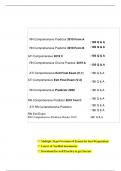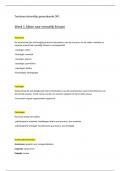Summary
Summary Edexcel A Level Chemistry Unit 5 - Formulae, Equations and Amounts of Substance notes written by a 3A* Imperial College London Medicine Student
- Institution
- PEARSON (PEARSON)
Detailed notes on Unit 5 - Formulae, Equations and Amounts of Substance covering all the specification points. This allowed me to achieve an A* in chemistry. Covers formulae, definitions, empirical formula, calculations of molar mass, ionic compounds and equations, chemical equations and balancing,...
[Show more]













